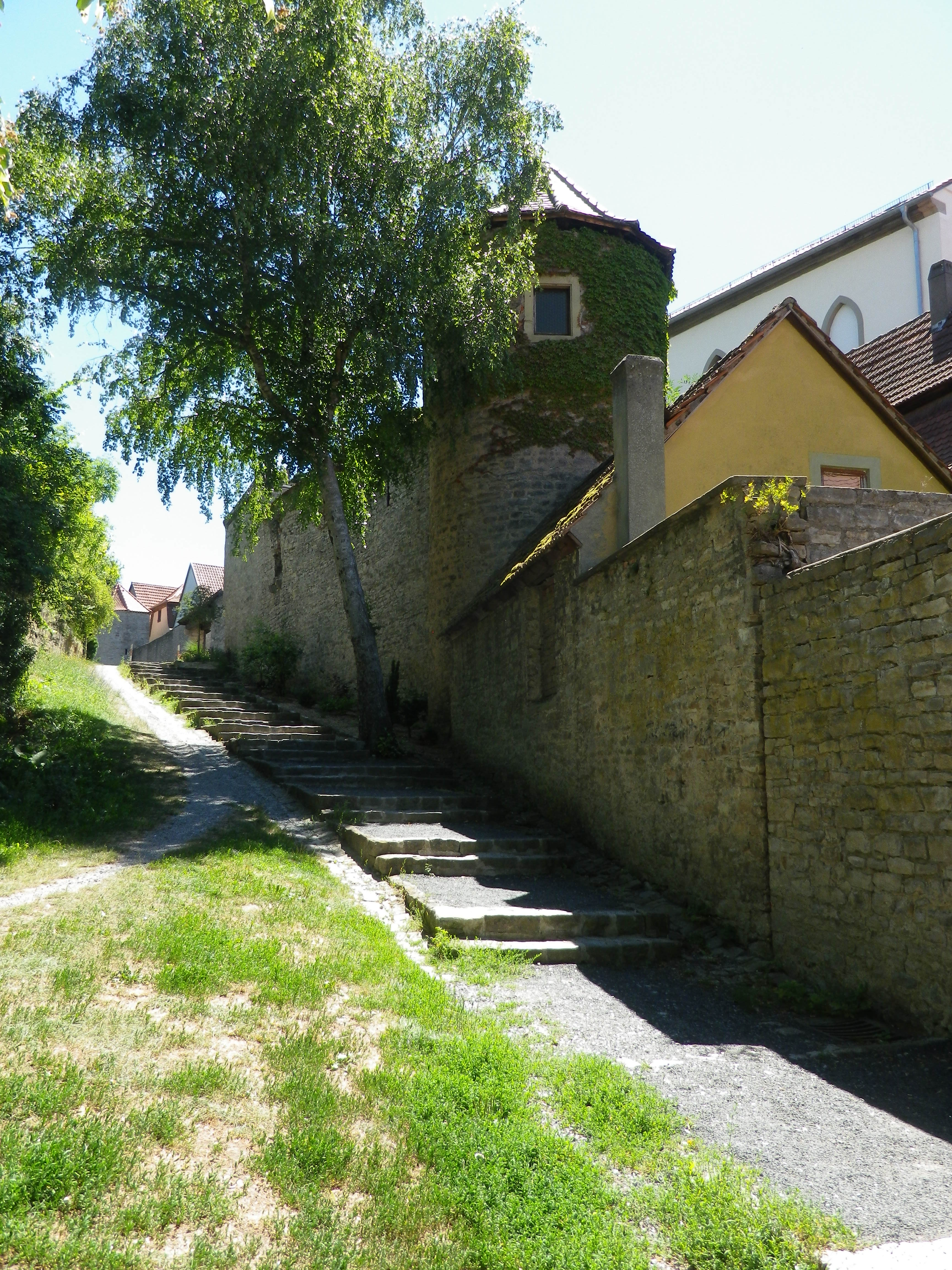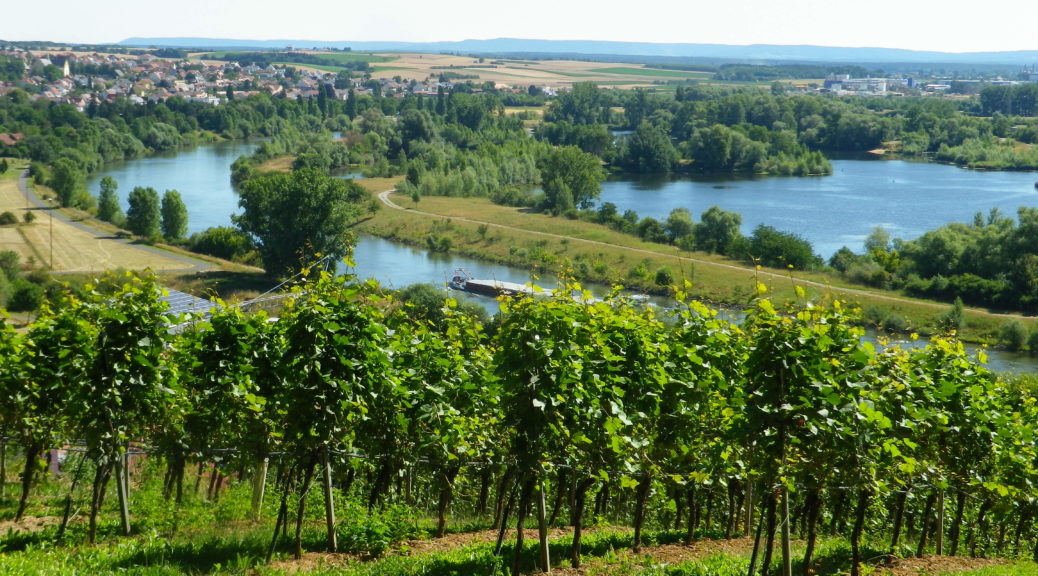The Maindreieck wine region in Franconia is an area of quiet refinement. This region offers lovingly preserved ancient towns untouched by mass tourism, and miles of fruitful vineyards producing some unique wines (and wine bottles), all nestled within the gentle curve of the Main River. Yet the sophistication of Wuerzburg, in terms of food and wine, pervades throughout.
Dettelbach, where this circuit trail begins, is a charming old town along the Main River. Behind its town walls, lies a hidden jewel, filled with carefully maintained half-timbered houses, Renaissance and Baroque era churches and chapels, and old homes with private courtyards, some now offering seating for very good restaurants. Exploring inside the walls is fun, but making the rounds of the existing wall sections and towers is even more interesting, as the towers’ architecture suggests centuries of upkeep and renovation.
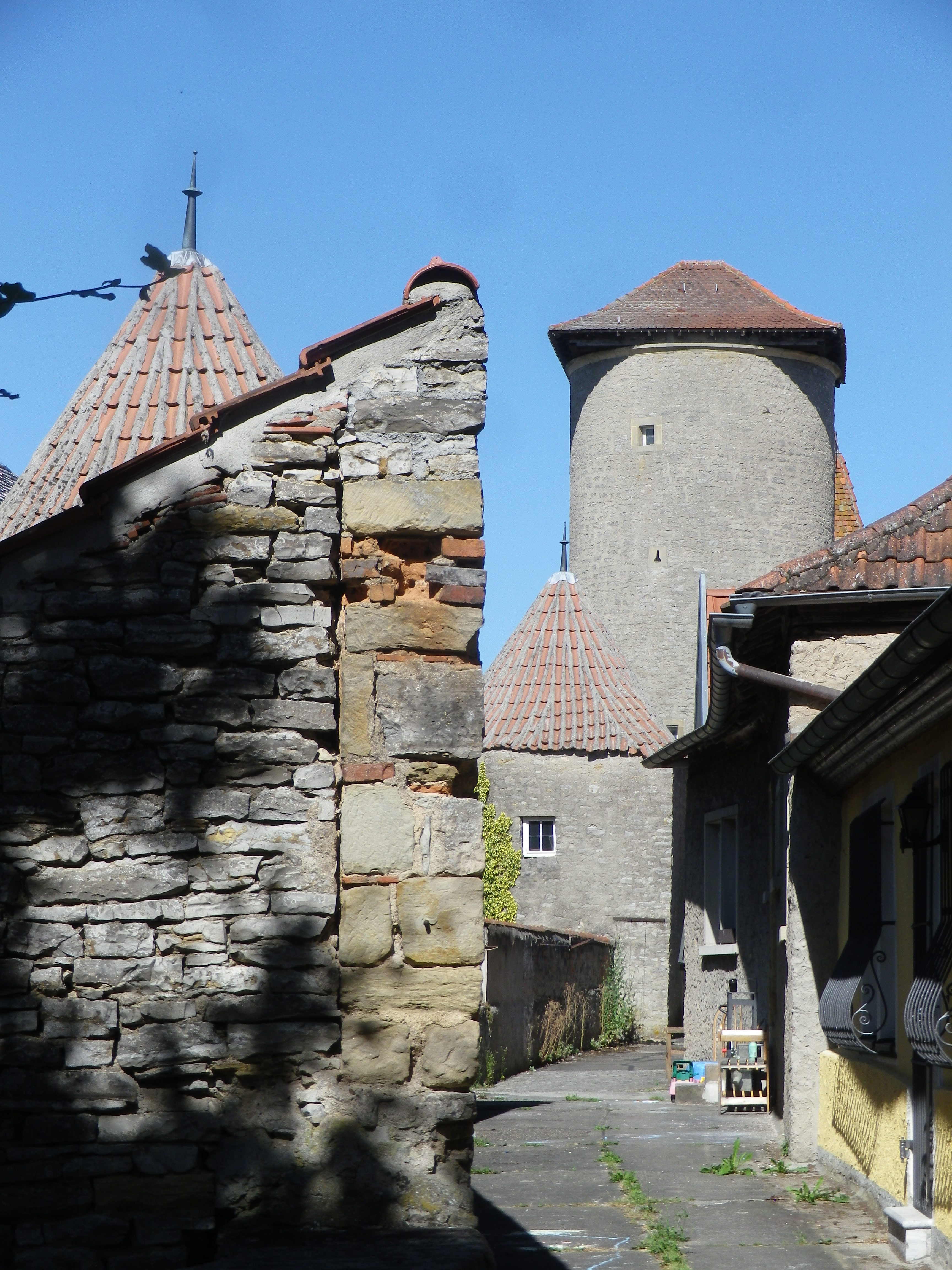
But beyond the old town gates lie Dettelbach’s famed vineyards. This trail leads from the heart of the town to the heart of the vineyards, and then beyond. Once in the vineyards, it followed part of a two-kilometer-long wine education trail, the Sagen und Mythenweg, leading up to a beautiful hut with a panoramic view of the town and river. As the Dettelbach trail continues to follow the wine education trail, the panels help to highlight the unique aspects of winemaking in this area.
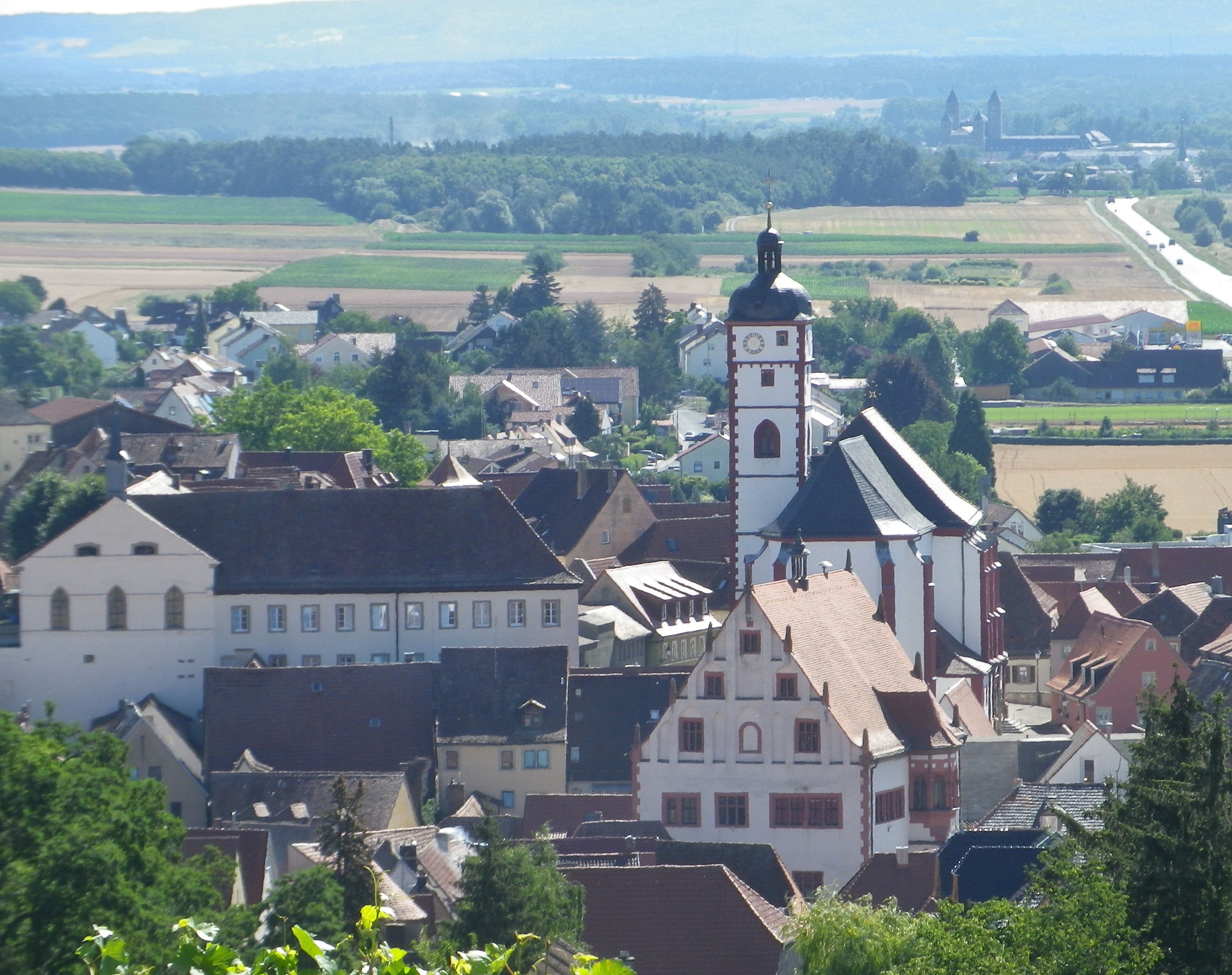
But the divergence from the shorter trail comes with a welcome section through woods. Much of this trail is not in shade, so perhaps it is best done in fall or spring. But the trees provide a nice break, and before long, the trail is passing through more Berg-Rondell vineyards, up to the Saint Joseph statue. Saint Joseph is lovingly maintained, even under a roof. I envied him the shade. A sheltered bench here would not have gone amiss, and provided me with a reason to spend more time on this quiet hillside with a lovely view of the river and distant Steigerwald.
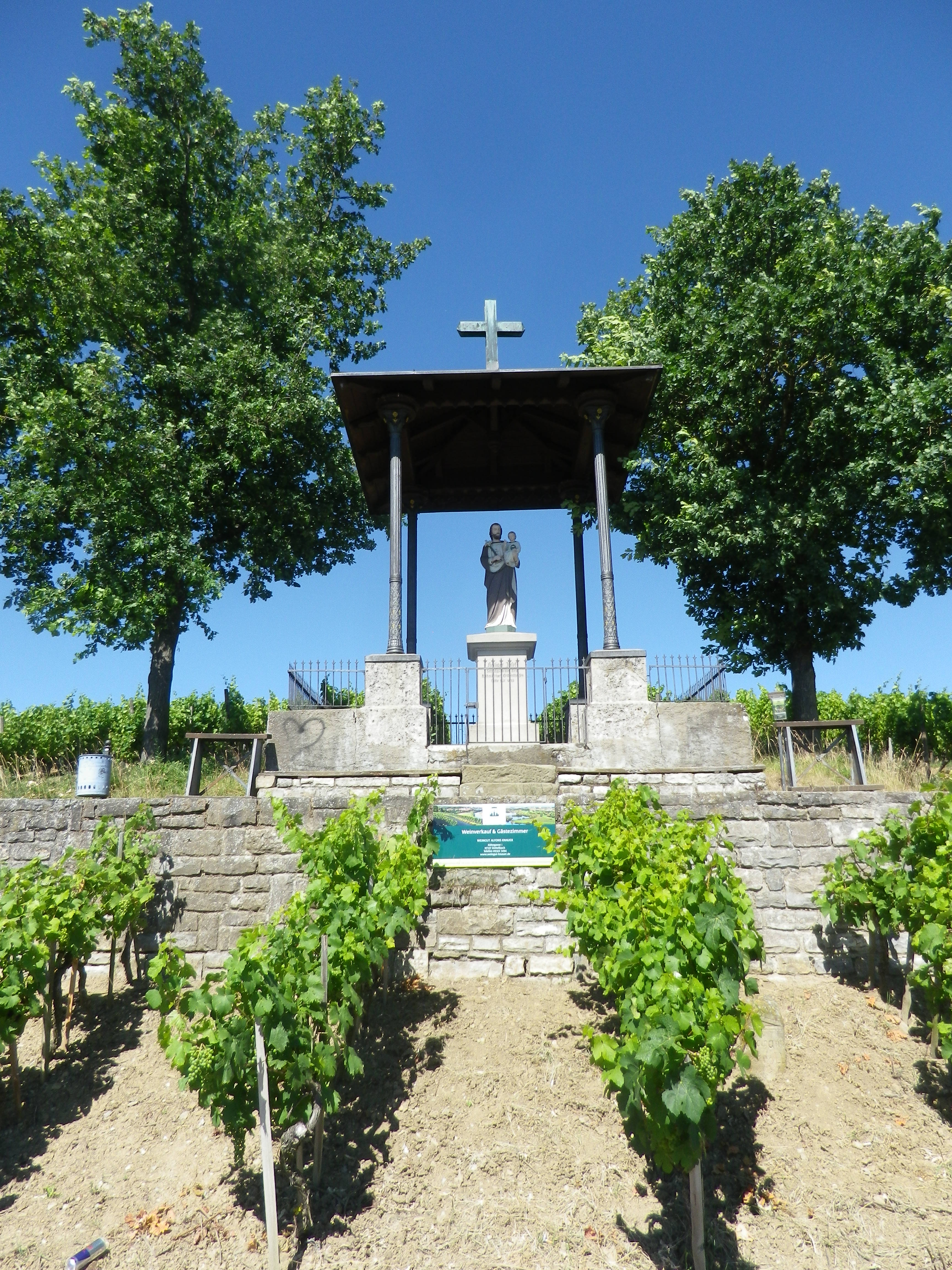
All of a sudden, the trail reached the top of the ridgeline, and traversed a plateau. Here, seemingly on top of the world, the vineyards ended, and vast fields of wheat (and other grains) appeared. As they approached ripeness, they blazed gold, and were interspersed with green (some form of vegetable, I assume), making interesting mosaics as far as the eye could see. In this featureless terrain, the trail markers often were painted on the road surface. I spotted Bibergau in the distance, and shortly thereafter crossed the eponymous stream, rather reduced in the summertime.
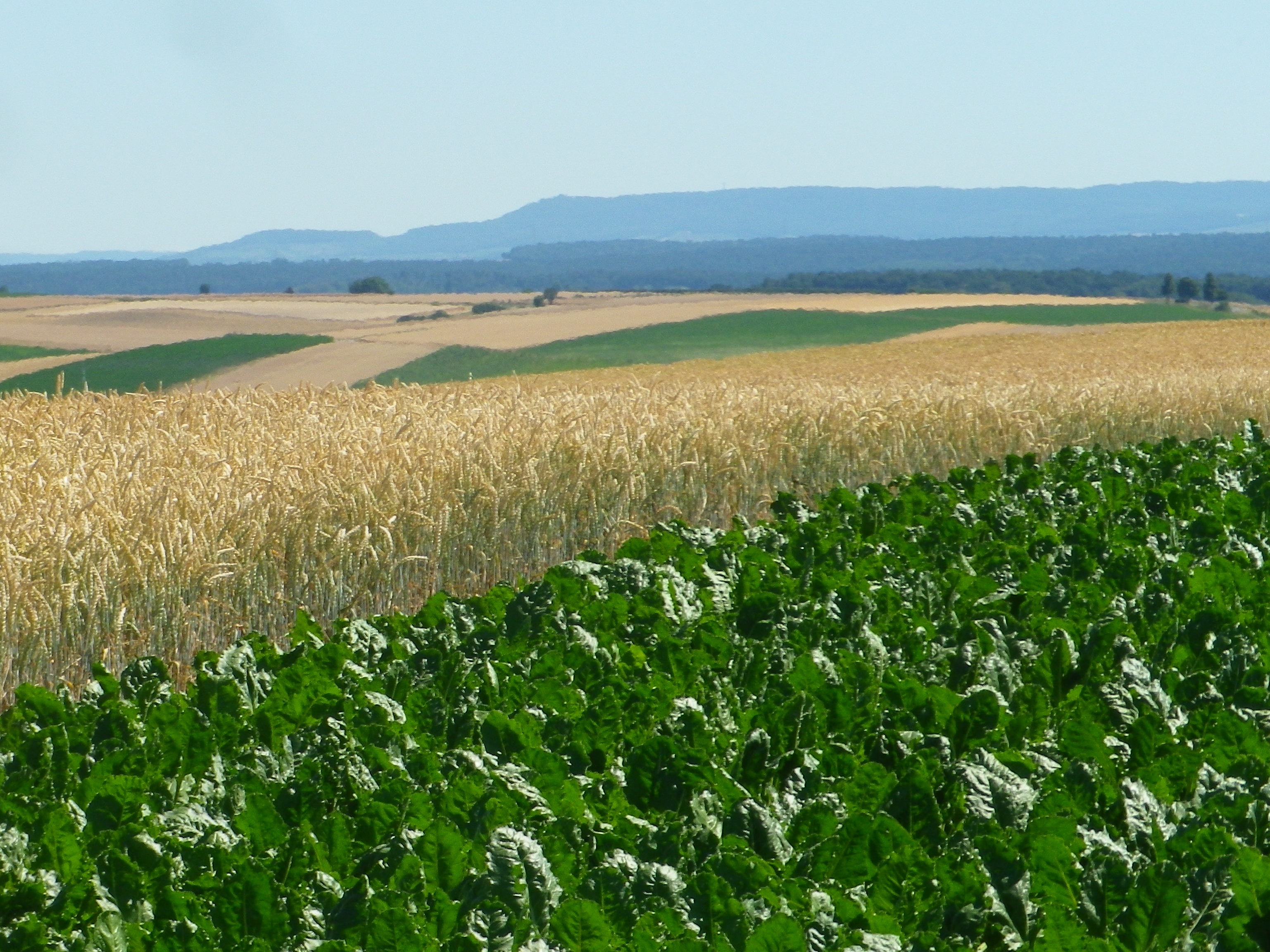
The vineyards, which had begun again, ended abruptly as the trail approached the Fendel Stables. In one of the paddocks, a mare and filly followed me with interest, until they found something else to do. There were a couple of stables in close proximity, and it occurred to me that some of the fields on the plateau would make for wonderful cross-country riding once the crops were in.
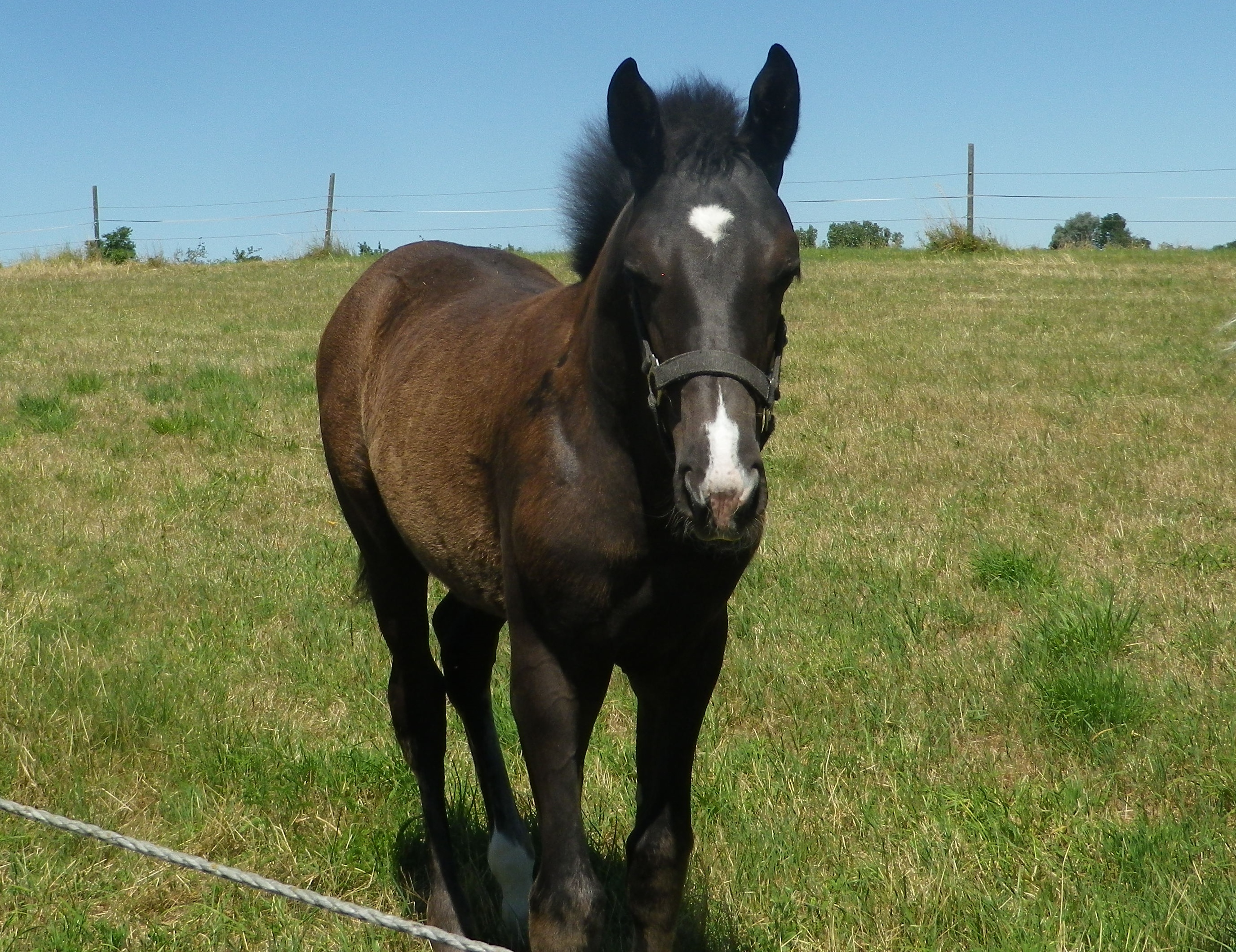
On the final approach back to town, the trail meandered along the Dettelbach stream. Shaded by old trees, and lined with old mills, and gardens, this was a nice conclusion to the trail. Re-entering Dettelbach by one of the old gates, as the old church bells majestically tolled the approach of lunchtime, the wine taverns’ culinary and wine offerings beckoned.
